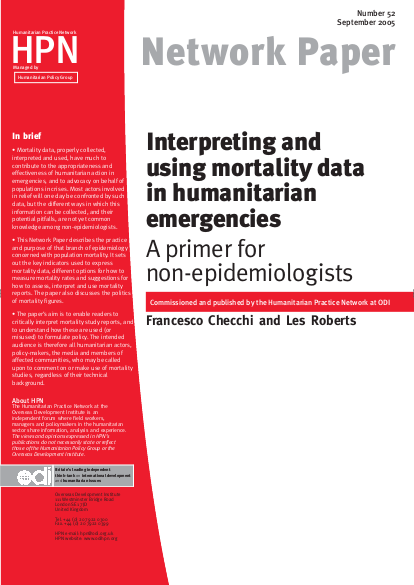A Primer for Non-Epidemiologists

Humanitarian emergencies are chaotic, continuously evolving phenomena. Their magnitude and pace often overwhelm the capacity of individual relief workers or agencies to fully appreciate their true scope and evolution. Sector-oriented relief organisations tend to focus on specific perceived needs and may lack breadth of vision, just as organisations with oversight roles, such as governments or UN agencies, may sometimes lack sufficient depth. In the face of evident injustice and suffering, it is difficult to maintain objectivity. Depending on one’s perspective, it may be professionally or emotionally more expedient to convince oneself and others that the situation of affected populations is either much better, or much worse, than it really is.
The starting premise of this paper is that the primary, most
immediate goal of humanitarian relief is to prevent excess
morbidity and mortality. Similarly, any excess mortality
should lead to a reaction. In this respect, mortality is the
prime indicator by which to assess the impact of a crisis,
the magnitude of needs and the adequacy of the humanitarian
response.